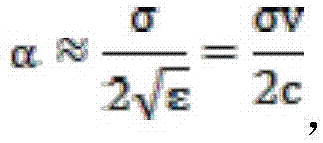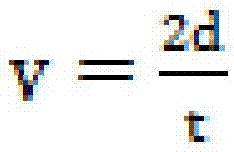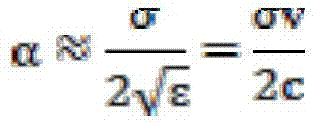Method for measuring soil compaction degree based on ground penetrating radar
A ground-penetrating radar and soil technology, applied in the field of geological exploration, can solve the problems of damage to soil, time-consuming and labor-intensive, etc., and achieve the effect of simple and accurate measurement
- Summary
- Abstract
- Description
- Claims
- Application Information
AI Technical Summary
Problems solved by technology
Method used
Image
Examples
Embodiment
[0025] A method for measuring soil compaction degree based on ground penetrating radar, said method may further comprise the steps:
[0026] The ground penetrating radar profile method with a center frequency of 500MHz is used for measurement, the time window is set to 20-50ns, the sampling time interval is 0.2ns, and the sampling space interval is 0.01m;
[0027] Signal processing includes: DC offset setting 500, saturation signal correction, zero point correction, and the use of exponential compensation gain, band-pass filter, vertical filter, median filter, spatial low-pass filter, and offset filter according to the actual situation.
[0028] Electromagnetic wave propagation velocity extraction: The extraction of electromagnetic wave velocity between layers first needs to determine the soil layer interface and depth, and then read the two-way travel time of electromagnetic waves in the soil layer and substitute it into the formula
[0029]
[0030] Among them, v represen...
PUM
| Property | Measurement | Unit |
|---|---|---|
| frequency | aaaaa | aaaaa |
| electrical conductivity | aaaaa | aaaaa |
Abstract
Description
Claims
Application Information
 Login to View More
Login to View More - R&D
- Intellectual Property
- Life Sciences
- Materials
- Tech Scout
- Unparalleled Data Quality
- Higher Quality Content
- 60% Fewer Hallucinations
Browse by: Latest US Patents, China's latest patents, Technical Efficacy Thesaurus, Application Domain, Technology Topic, Popular Technical Reports.
© 2025 PatSnap. All rights reserved.Legal|Privacy policy|Modern Slavery Act Transparency Statement|Sitemap|About US| Contact US: help@patsnap.com



